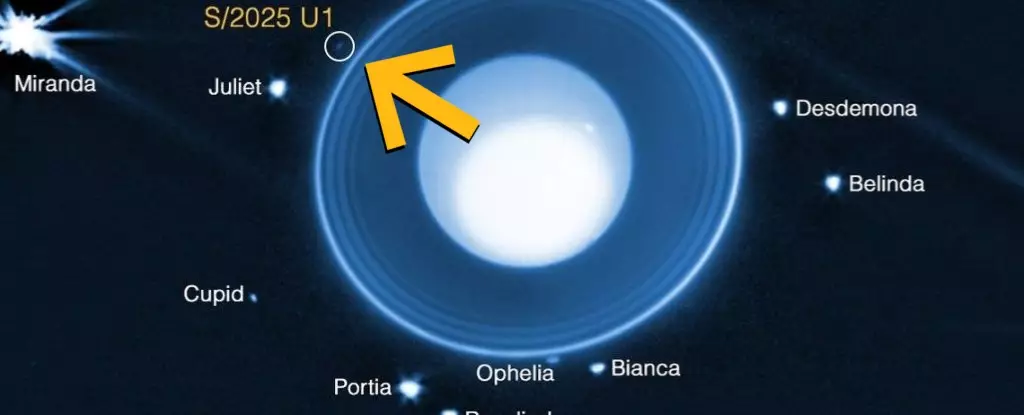The recent discovery of a new moon orbiting Uranus epitomizes the relentless human pursuit of knowledge about our universe’s distant celestial bodies. While the Voyager 2 mission in 1986 initially gifted us a groundbreaking glimpse of Uranus, our comprehension has remained surprisingly limited. The latest detection by the James Webb Space Telescope (JWST) signifies an extraordinary leap forward, revealing that even in the realm of planetary rings and moons, there is an almost infinite complexity yet to be deciphered. The identification of S/2025 U1, a tiny lunar fragment approximately 10 kilometers across, challenges previously held assumptions about the simplicity of Uranus’s satellite system. It’s a testament to how much remains hidden in the shadows of our solar system, waiting for advanced technology to bring them into focus.
Small Moons, Big Stories
What makes this discovery particularly compelling is the sheer number of small moons intimately orbiting Uranus—29 in total—and their perplexing arrangements. Unlike other planets, Uranus’s inner moons are densely packed and exhibit intricate relationships with the planet’s faint rings. These tiny celestial objects are unlikely to be remnants of a single catastrophic event; instead, they seem to tell a story of ongoing dynamism and chaos. The newly discovered moon, situated between Ophelia and Bianca, has an almost circular orbit, indicative of a stable formation process distinct from the chaotic environment suggested by other moons’ irregular paths. Such details hint at a dynamic history, possibly involving past collisions, gravitational perturbations, or even ongoing accretion.
Implications for Future Research and Exploration
The significance of this discovery extends well beyond mere cataloging. Each small moon acts as a puzzle piece, providing insights into Uranus’s tumultuous past and the evolution of planetary systems. The use of JWST’s near-infrared imaging capabilities allowed astronomers to identify this faint, elusive object—something that previous missions like Voyager could not detect. This achievement emphasizes the importance of continuous technological advancement and the need for renewed interest in icy giants such as Uranus. Moreover, the discovery stirs curiosity about what other secrets lie dormant within the planet’s ring-moon system, potentially reshaping our theories about planetary formation and celestial mechanics.
A Call for Renewed Exploration
Given how much remains undiscovered, the question is whether humanity is ready to revisit Uranus with even greater vigor. The presence of such small, faint moons suggests that our current understanding is just the tip of the iceberg. As astronomers continue to analyze JWST data, it becomes increasingly clear that the narrative of Uranus is far richer and more complex than previously imagined. Future missions equipped with more sophisticated instruments could unravel the exact origins of these moons, their compositions, and their roles in shaping the planet’s intricate ring system. Perhaps it’s finally time to rekindle our exploratory efforts and chart the uncharted territories of the final frontier, driven by a fascination that refuses to fade.


Leave a Reply